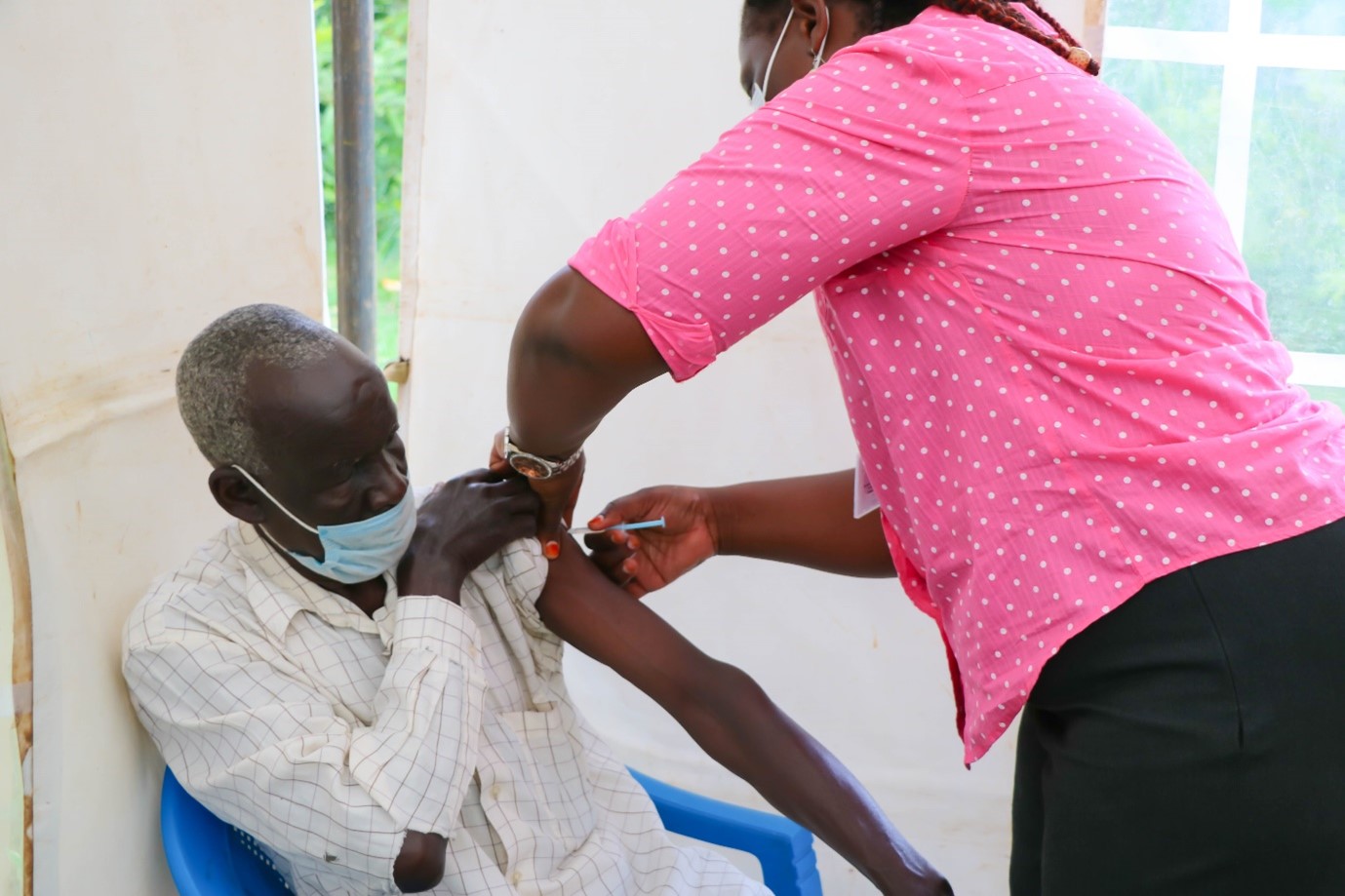A vaccination drive against COVID-19 which prioritises older people has been implemented in Kenya, despite the vaccine hesitancy being high amongst older women and men.
Misconceptions play a pivotal role in shaping health behaviours, including vaccination uptake. Cognitive barriers to vaccination among older people may be explained through misconceptions of virus treatment, vaccines, and misappraisal of infection threat.
In March 2021, the Kenyan government, through the Ministry of Health, announced that people aged 55 years and above would be prioritised in COVID-19 vaccination because they are at severe risk and account for over 60 per cent of recorded deaths in the country.
They launched the vaccination programme with the first phase targeting 2.25 million people at high risk of infection. These included older people, medical workers, teachers, and security officers.

68-year-old retired teacher, Andrew Wandera received the COVID-19 vaccine at a health centre in Busia, Kenya during a vaccination sensitization drive.
Misconseptions about vaccines
Andrew Wandera, a 68-year-old retired teacher residing in Busia county in Kenya, heeded the call and visited the main referral hospital in the county a few days after the announcement and was duly vaccinated. Wandera recounted how he helped influence other older people in his church and neighbourhood to get the vaccine.
“There were lots of misconceptions in the village about the vaccine, with some saying that the vaccine causes sickness, but I used myself as an example to encourage fellow elders to get the vaccine,” said Wandera by phone, adding that his 62-year-old wife, also got vaccinated.
It was a challenge convincing older people to get vaccinated owing to the misconceptions they had on the vaccine. The misconceptions included that the vaccine had ingredients that harm or even kill people, it is dangerous and has severe side effects that are long-lasting in the body, and that the COVID-19 vaccine can give you coronavirus.
Others believed that natural immunity is better than vaccine immunity and that they are strong enough to handle the illness because they eat natural foods. Beliefs that the vaccine was developed too quickly without proper research compounded the misconception of its safety.
All this was brought by the information they had from the society of other people’s experiences with the vaccine. To discourage this, through the Ministry of Health, civil society pushed advocacy campaigns to encourage everyone to get vaccinated, not only older people.
Access to vaccines, and barriers that older people are facing
Kenya’s vaccination drive was hit by a shortage of doses which was a source of concern for many.
67-year-old Veronica Gitonga from Nyandarua County explained: ‘‘The government has done well in terms of prioritising older people for vaccination. My only worry is whether I will get the second dose.
“Similarly, I am not convinced that the government did a proper investigation into the safety of the vaccine as reports of adverse effects of the vaccine are barely made public if any. Nobody has done any follow up to check how I am faring after receiving the vaccine. This has worried many of my friends who have decided to keep away from being vaccinated. Awareness was inadequate.”
There was a reprieve when more vaccines were donated to the country and the government was able to allay the fears of the public about not being able to get the second dose. The AstraZeneca, Moderna and Johnson & Johnson vaccines were all made available in hospitals.
Vaccination centres were also decentralised, increasing accessibility at county health centres even in the most far-flung rural areas. This also helped debunk the notion that the vaccine was only available in urban centres.
Among other challenges, the extensive use of the internet in the communication of vaccination schedules and other information meant that older people were left behind. All indications are that there was little or no action to help older people overcome technological and other challenges that stood in the way of vaccination access.
Steps to overcome vaccine hesitancy
Although demand for COVID-19 vaccines continues to outstrip supply, the pace of COVID-19 vaccinations across Kenya is increasing, despite the widespread hesitancy. The initial apathy created by a lack of trust in the government and concerns about side effects has changed as a result of campaigns to increase uptake.
A wide range of voices, from clinicians and scientists to community members and local, state, and government agencies, were used in information-sharing and messaging campaigns to address apprehension and get the word out. The campaigns sought to ensure that people see themselves represented in the billboard adverts, print, television and radio messages as a way to help raise vaccination numbers.
So far, over 3.66 million doses have been administered. But just about 2% of the country’s 53 million people are fully vaccinated. The government is targeting to inoculate at least 10 million people by end of December. Kenya is now working with the Africa Centres for Disease Control and Prevention (Africa CDC), for assistance in procuring more vaccines to reach more citizens, according to the Ministry of Health.
By Brian Otwal, Administration & Communications Assistant, Africa region
